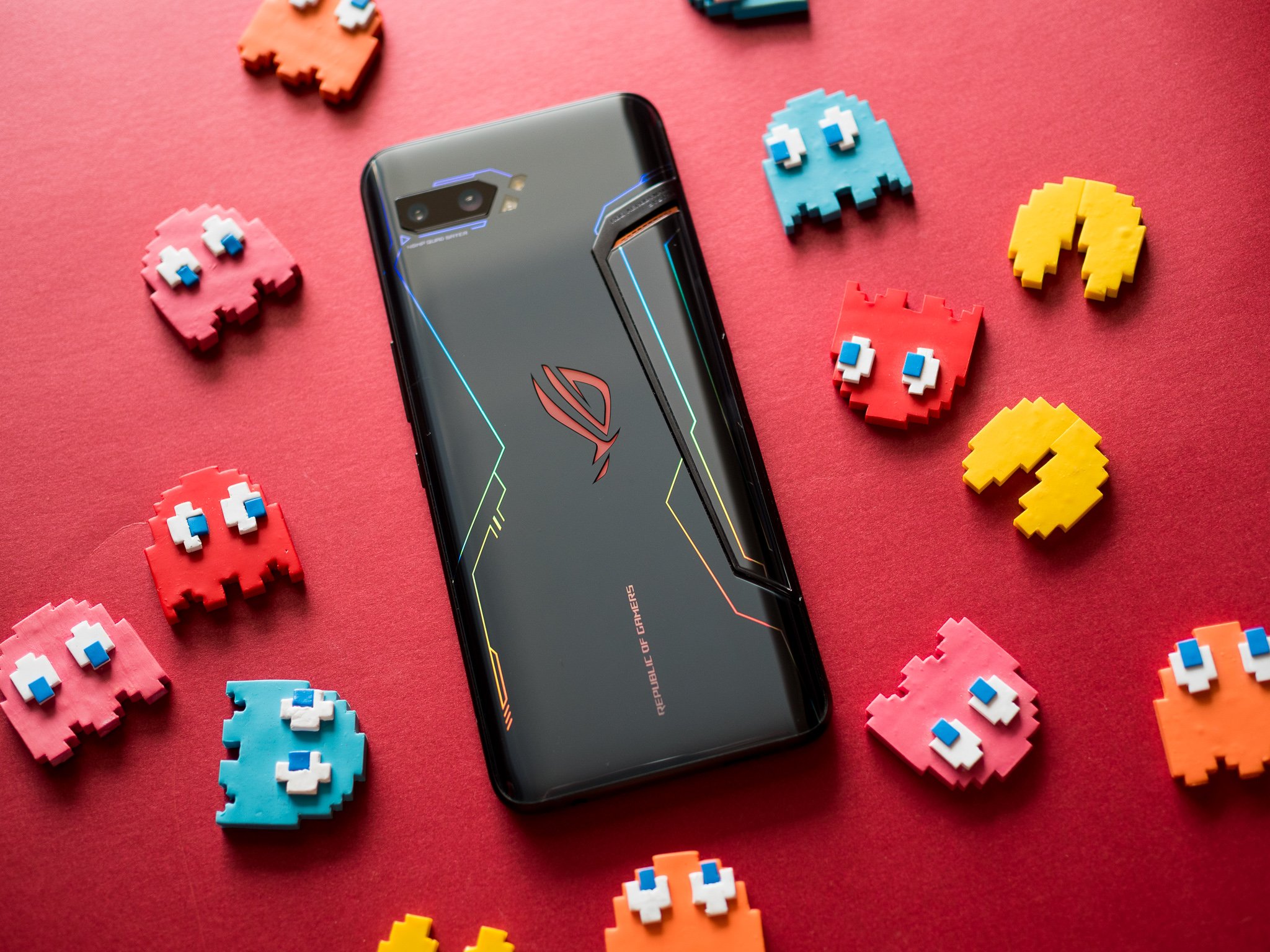Android Central Verdict
Bottom line: The ROG Phone 2 has everything turned up to 11: there's RGB lighting at the back, the Snapdragon 855+ chipset runs through everyday tasks with ease, the 120Hz display fundamentally alters how you use the phone, and the 6000mAh battery lasts two days. Yes, it's a great gaming phone, but even if you're not into gaming, there's plenty to like here.
Pros
- +
Sublime 120Hz display
- +
Outstanding battery life
- +
Aggressive design with RGB lighting
- +
Latest internal hardware
- +
Clean software with no bloat
- +
Unmatched performance
Cons
- -
Expensive in the U.S.
- -
Design isn't for everyone
- -
No wireless charging
- -
No water resistance
Why you can trust Android Central
What is the ROG Phone 2? It is a gaming phone, obviously. You need to take just one look at the RGB lighting at the back to come to that realization. Mobile gaming has seen a meteoric rise in recent years, and there are several brands that now cater to this particular niche. This is ASUS's second gaming phone, and there are a ton of cool features on offer.
The ROG Phone 2 is packed with the latest internal hardware. You get a 120Hz screen, Qualcomm's latest silicon, UFS 3.0 internal memory, a massive 6000mAh battery, and a clever heat dissipation system. You also get to change the look of the software — there's the option to switch between a gaming-oriented theme and a "pure" Android skin.
The device also powers an entire ecosystem of accessories, including a WiGig dock that lets you play games wirelessly on your TV, a gamepad with Switch-style controllers, and a dock that adds a second screen.
So what is the ROG Phone 2? It is the best damn gaming phone you can buy today, but that's just the beginning. It is a fantastic option even if you don't play games on your phone. The display is outstanding, you get battery life that's significantly better than any other phone in this segment, and the hardware is top-notch. Combine all of that, and it's easy to see why this is such a potent package.
ASUS ROG Phone 2 Design and display
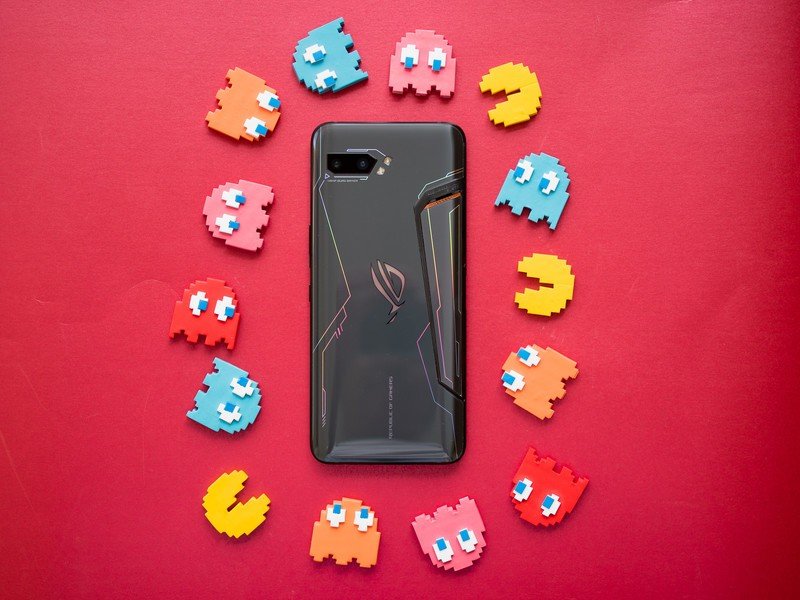
The ROG Phone 2 has a polarizing design — you'll either love the RGB lighting with the aggressive lines or hate it. There's no middle ground here, and I like that. Far too phones in the market today end up looking alike, and here you're getting a phone that stands out from the pack.
But bold styling isn't the only thing that makes the ROG Phone 2 stand out. The phone comes with a host of meaningful design tweaks, a fact that becomes evident the moment you start using it. ASUS trimmed the width to 78mm, which lets you reach all the way across the screen with your thumb while gaming. It has a 19.5:9 display with sizable bezels at the top and bottom, and that's on purpose too: ASUS didn't want to add a cutout on the phone, and the bezels facilitate front-facing stereo sound. Oh, and they minimize accidental touches when you're gaming.
Let's talk about the design at the back. The ROG Phone 2 has a glass back with an RGB logo in the middle, a dual-camera array with a jagged cutout on the top left, and a heat-dissipating vent. There's also a few laser-etched lines that add to the overall effect, and what you get here is a device that's unapologetically brash. The design certainly has a lot of flair, and as you'd imagine, it manages to turn heads.
Get the latest news from Android Central, your trusted companion in the world of Android

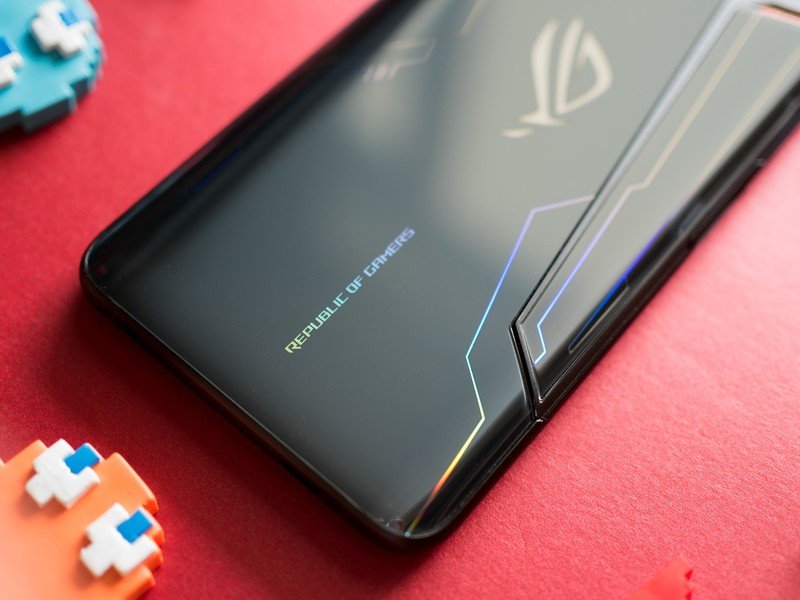
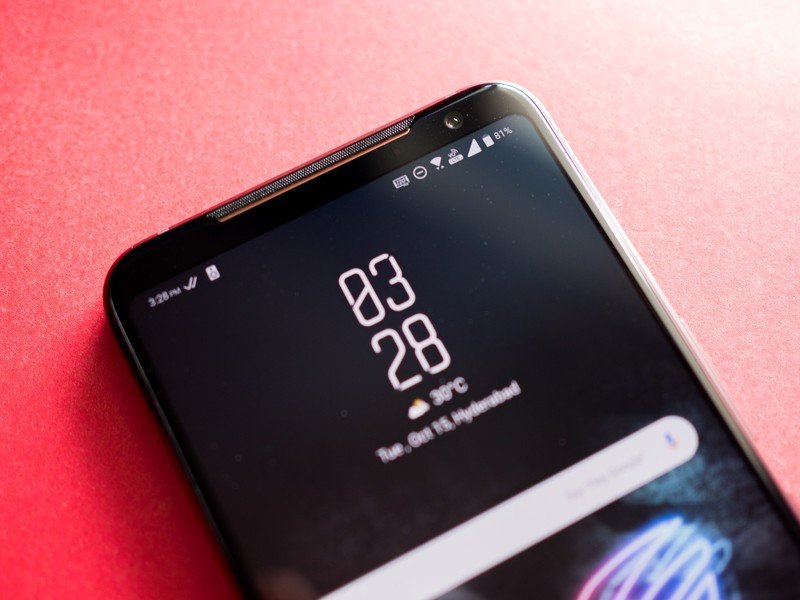

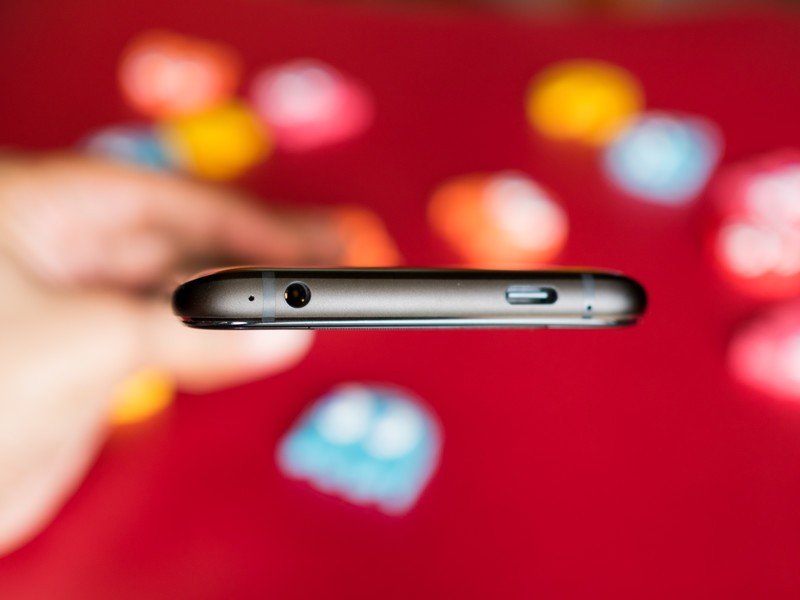

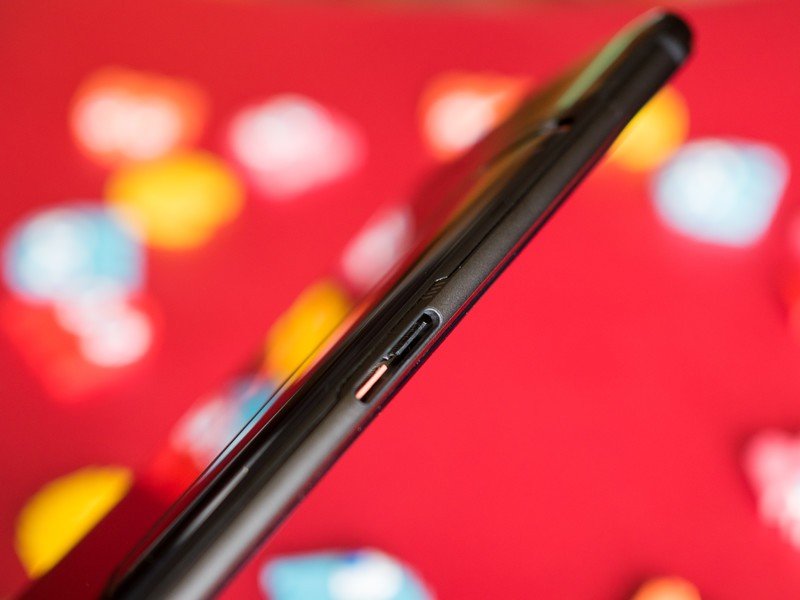
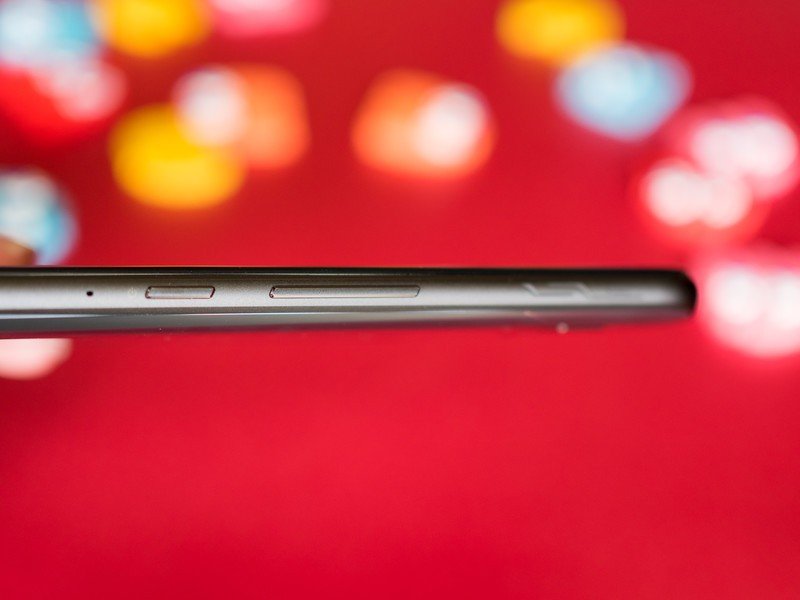
Both the front and rear panels of glass are covered by a layer of Gorilla Glass 6, and you get a minimal case bundled in the box that protects the sides while showing off the rear design and the RGB lighting. You'll be able to control the lighting effects at the back from ASUS's Armory Crate launcher, which acts as a hub for all your games.
The ROG Phone 2 sports three USB-C ports, with two located on the side and one at the bottom. You'll use the one at the bottom for charging most of the time, but if you're in the middle of a game and the battery is running low, you can use the side-mounted port to charge the phone. Doing so lets you hold both sides of the phone without having to readjust your grip when gaming, as there's no cable running out on one side.
The ROG Phone 2 is one of the heaviest phones available today, but the in-hand feel is perfect.
You'll only be able to use two USB-C ports for charging, with the third port dedicated to ASUS's accessories. That one is clearly marked in orange, and there's a label that tells you the same when you unbox the phone.
At 240g, the ROG Phone 2 is one of the heaviest phones you can buy today. The added weight is because of the massive 6000mAh battery and unique thermal management system, but the phone itself feels great to use in-hand. You don't really notice the heft, and that's because the weight distribution is perfect.
And as there's a large bezel around the screen, you get a notification LED to the left of the speaker at the top. The ROG Phone 2 also has a 3.5mm jack at the bottom, and you get ultrasound buttons on the shoulder that lets you assign in-game actions. The volume buttons are located just above the power button, and the power button itself sits around the middle of the frame, allowing for easy access.
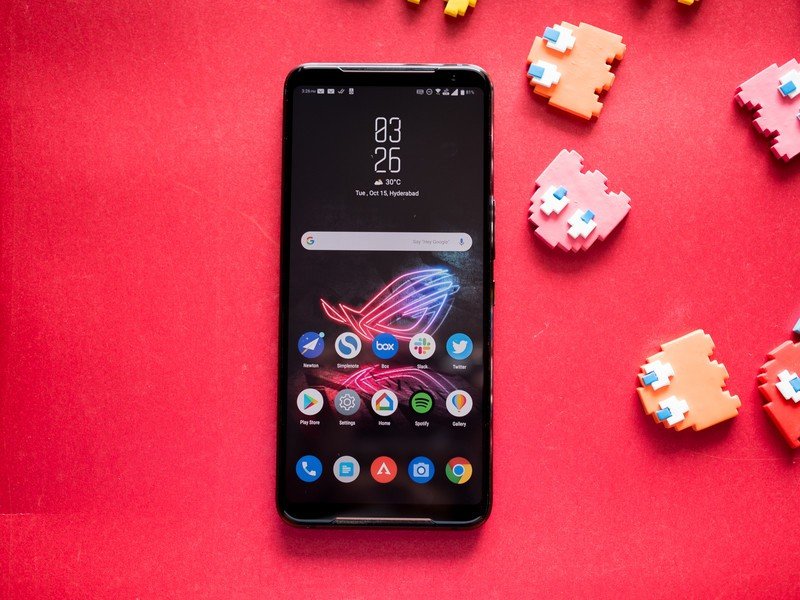
One of the standout features on the ROG Phone 2 is the display. You get a massive 6.59-inch 10-bit display with a 120Hz refresh rate, with ASUS making several optimizations to the latency to ensure the screen is one of the most responsive in the market today. You get an AMOLED panel with an FHD+ resolution, and ASUS says the resolution is ideal for gaming phones. By not switching to QHD+, ASUS is able to deliver better battery life.
The panel itself is fantastic; you get excellent colors and deep blacks, and it has decent viewing angles. The screen gets bright enough that it wasn't an issue even under harsh sunlight, and it also has HDR, which is particularly great for watching TV shows on Netflix or Prime Video.
The 120Hz display is addictive like no other phone available today.
90Hz panels are now common, with the likes of the OnePlus 7T and Google Pixel 4 offering displays with high refresh rates, but ASUS is looking to get an edge here by going with an even higher 120Hz panel. The display is responsive like no other phone I've used to date, and there's a feeling of immediacy that you just don't get elsewhere.
A lot of that has to do with the latency. The phone has a touch latency of just 49ms, which is almost half that of other flagships: for context, the Galaxy S10+ has a latency of 87ms, the 90Hz OnePlus 7 Pro is at 85ms, and the iPhone XS Max is at 75ms. Combine that with touch polling at 240Hz, and the ASUS dominates in this area.
One of the downsides of high refresh panels — particularly relating to games— is that most games in the market today are locked to 60fps. So even if you're using a 120Hz display, you won't be able to run titles like PUBG or Call of Duty: Mobile at 120fps. But what allows the ROG Phone 2 to stand out is the touch latency. In games that are locked to 60fps, you will see a difference thanks to the latency — any trigger action or movement is immediately translate on-screen, and that gives you an edge.
All the gaming-focused design tweaks end up making a huge difference in day-to-day use. Even if you're not a gamer, you'll love the changes on offer. The side-mounted USB-C port, in particular, is great for when you need to charge your phone while watching a video or movie, and the dual speakers up front sound fantastic. They're one of the loudest speakers you'll find on a phone today, and they make watching videos a delight.
That's a constant theme with the ROG Phone 2. Sure, the phone is designed for and aimed at gamers, but the features on offer here will come in handy in everyday usage scenarios.
ASUS ROG Phone 2 Hardware
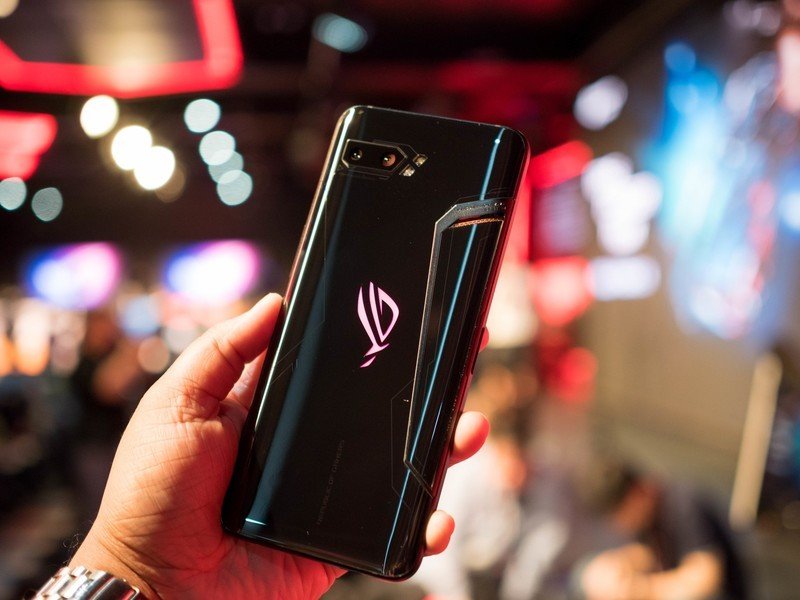
As you'd imagine, the ROG Phone 2 is loaded with the latest internal hardware available today. The phone is powered by the Snapdragon 855+, a turbocharged version of the Snapdragon 855 with higher clocks. The Snapdragon 855+ has a few notable tweaks over the standard 855 — the cores go up to 2.96GHz, and you get a 15% uptick in GPU performance — but the overall architecture between the two is identical. Everything is just turned up to deliver just that little bit more in terms of performance.
The hardware on offer here puts other phones to shame.
You also get 12GB of LPDDR4X RAM and UFS 3.0 storage. You don't need 12GB of RAM on a phone; heck, Android isn't able to use all of that RAM yet, but it is a great way to future-proof your investment. And the 512GB storage module comes in handy for storing all the games you could possibly want, and then some.
ASUS didn't stop there: it added four Wi-Fi antennae to the ROG Phone 2, ensuring you get rock-solid connectivity regardless of whatever orientation you're holding the device. There are antennae all along the right side of the phone, with the main antenna on the left edge. The phone also bridges your cellular data and Wi-Fi signal to deliver the best possible connectivity while gaming. Oh, and the haptics are fantastic. The phone has two vibration motors that deliver excellent feedback during gaming and everyday tasks.
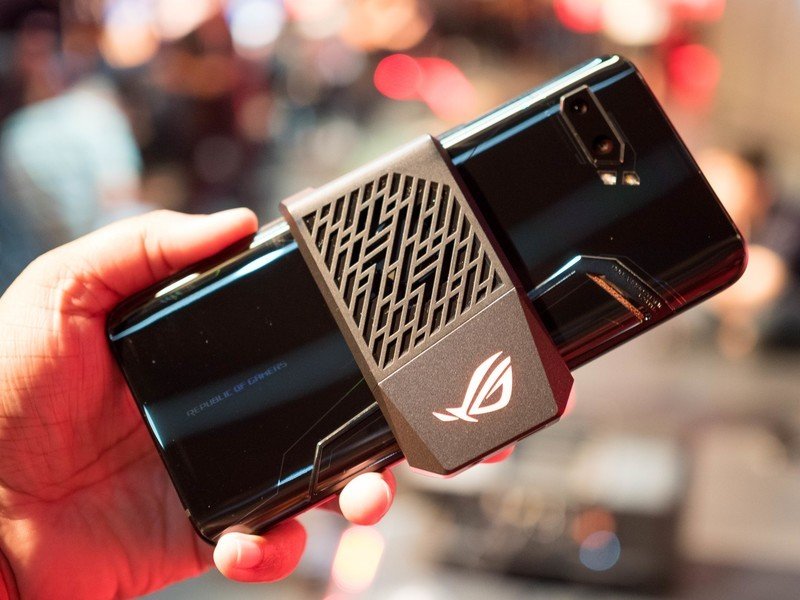
The phone is optimized for landscape use, and even the orientation of the in-display module changes when you're in landscape mode. That's particularly nifty, and something I haven't seen on another phone. The in-screen module works incredibly well, and I haven't faced any issues on this front. ASUS also designed the front camera modules, so they're not accidentally covered by your thumb while gaming.
The GameCool II heat dissipation system and AeroActive Cooler II ensure the phone stays cool even during intense gaming sessions.
ASUS offers a second-generation GameCool II heat dissipation system on the ROG Phone 2, which is a multi-layer design that's designed to effectively siphon heat away from the internal hardware. The system includes a 3D vapor chamber, thermal paste, copper pads, and a heat sink that work in conjunction to lower the temperature during intense gaming sessions.
If that doesn't do it, ASUS bundles the AeroActive Cooler II with the ROG Phone 2. The fan accessory attaches via the side-mounted USB-C ports and is designed to lower the temperature by four to six degrees Celsius. The fan has a new design that allows it to run quieter — ASUS says it's four times as quiet as the first-gen model — and the airflow is considerably better. Best of all, the fan accessory has a 3.5mm jack of its own, allowing you to plug in a headphone instead of on the side.
Another notable gaming-focused feature on the ROG Phone 2 is AirTriggers: shoulder-mounted pressure-sensitive trigger buttons that let you assign in-game touch actions. The buttons have significantly less latency this time around — it's at 20ms — and they deliver much better haptic feedback. You get the option to choose the actuation level for the triggers, and the overall responsiveness combined with the feedback makes them a standout addition.

So what does it feel like to use the ROG Phone 2 for gaming? In a single word, it's fantastic. It's an absolute joy to play on the phone, and all the little tweaks ASUS made to the design and ergonomics make it the best gaming phone in the market today. The 120Hz panel is sublime in day-to-day use, and it makes mundane tasks like scrolling through text and browsing social media apps a delight. The phone is also great for watching videos thanks to the loud stereo speakers, and the 3.5mm jack has a high-res DAC that sounds fantastic when you plug in a wired headset.
There's no other device that offers nearly as many features as the ROG Phone 2, and it has been an absolute joy to play games on the phone over the course of the last month.
ASUS ROG Phone 2 Accessories

The ROG Phone 2 story doesn't end with just the phone. In fact, that's just the start. ASUS offers a wide variety of accessories with the device that significantly extend its capabilities. ASUS sent me the media kit, which is a suitcase full of accessories that are available for the phone. The only accessory that's bundled with the phone is the AeroActive Cooler II, but if you're serious about mobile gaming, you'll want to pick up some of these attachments.
ROG Kunai Gamepad
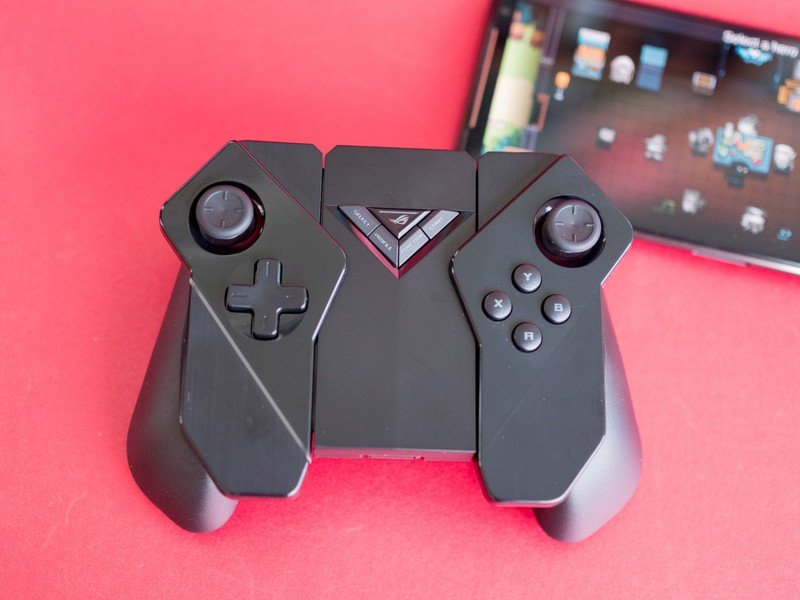
The Kunai Gamepad is my favorite accessory. It consists of two controllers that attach to a gamepad that has more buttons than you'll end up using. ASUS says this was by design, as it allows more flexibility in assigning buttons based on the gameplay style. The controller sports two analog sticks as well as a D-pad, and four action buttons. The left controller has a dedicated 3.5mm jack. When connected to the gamepad, you get a total of 25 buttons.
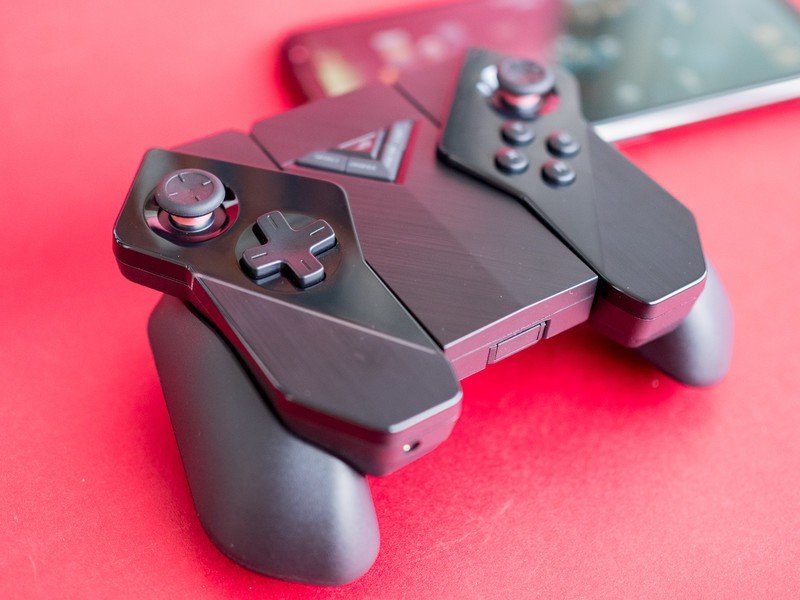
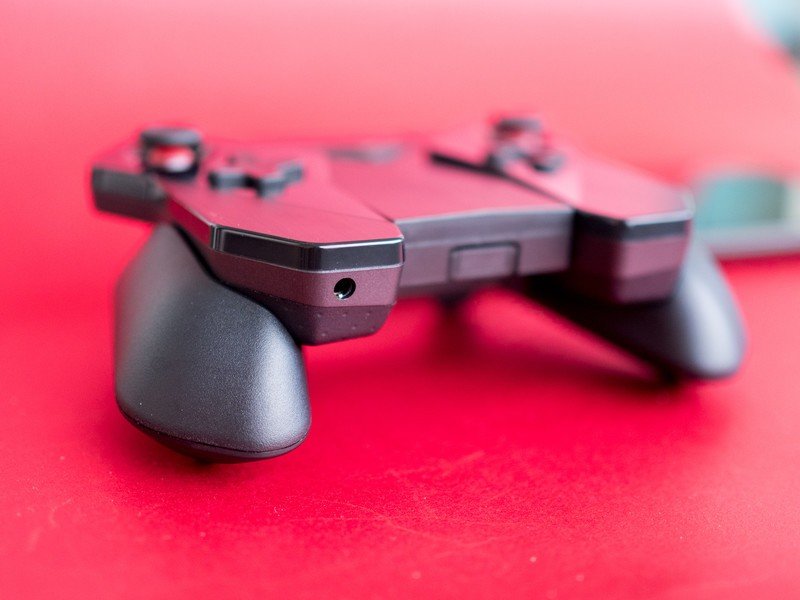

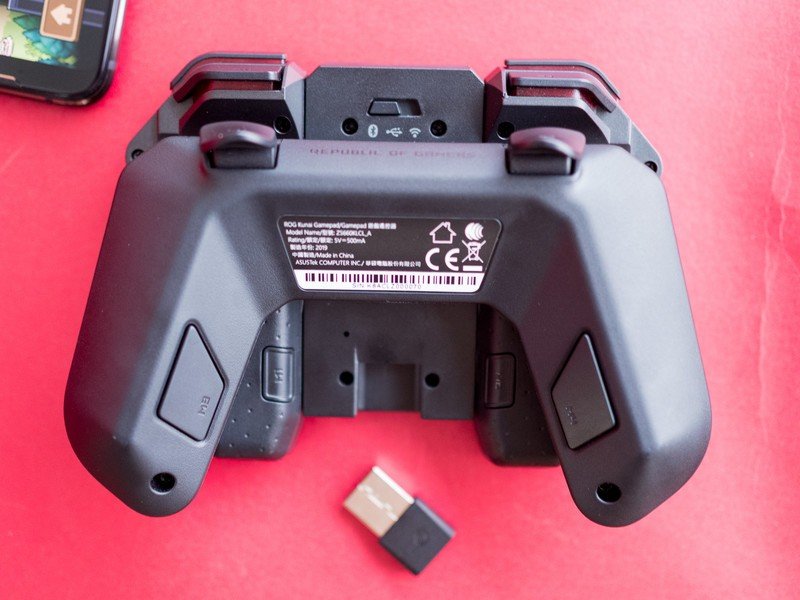
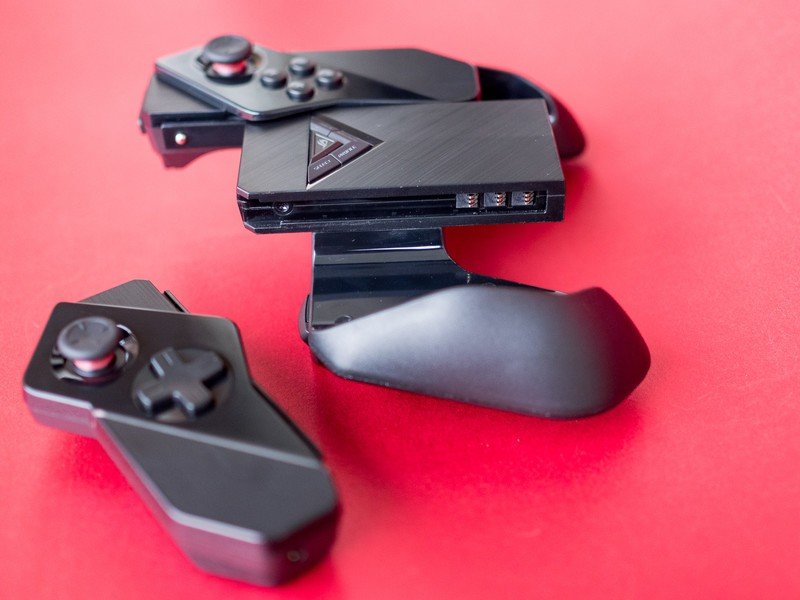
You can connect the gamepad via Bluetooth or 2.4GHz to a dock, and you can also hook it up via USB-C. It has an eight-hour battery life, and charges over USB-C. There's also a bumper that extends the phone's USB-C connection to the controllers, minimizing the latency and adding an extra layer of RGB lighting effects.

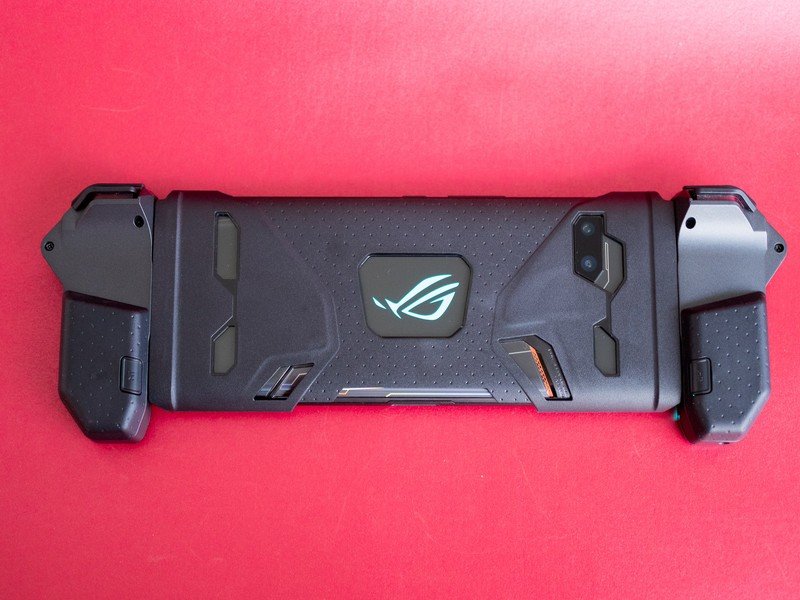
Mapping keys to the physical controllers is very straightforward: popular titles already come with pre-assigned keymaps, and you can use ASUS' Game Genie to assign keys in-game.
TwinView Dock II

The TwinView Dock II is an interesting accessory that adds a secondary screen to the ROG Phone 2. This time around, ASUS added a 6.6-inch 120Hz screen to the dock — the same as what you get on the phone itself. There's also RGB LEDs at the front and sides, a 3.5mm jack, and an integrated 5000mAh battery. The phone now slots into the base and not the lid, and that makes it easier to hold and use the dock.
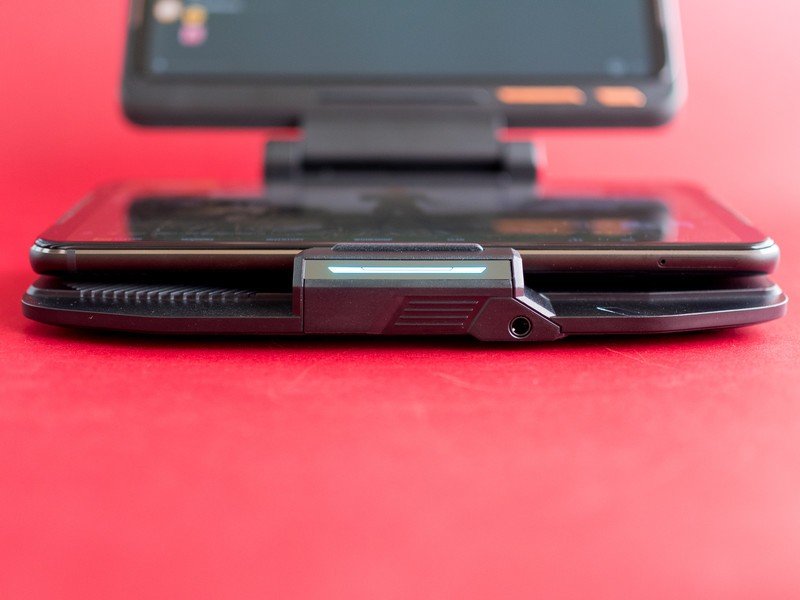

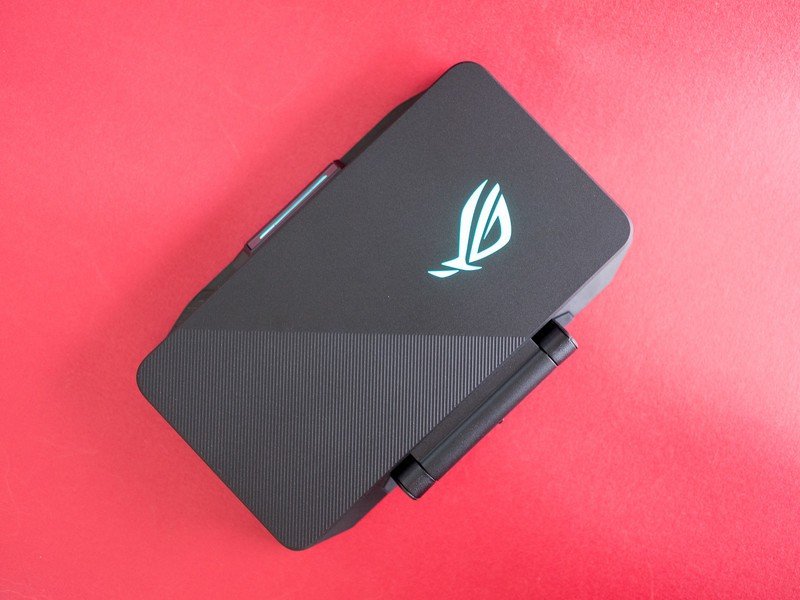
Oh, and the dock also lets you slot in the Kunai bumper with the controllers on the sides, effectively turning the phone into a powerful portable handheld gaming console. The second screen enables you to view additional information in games that let you extend the display, and in other scenarios, you can have a live chat running. If you're in the mood for a challenge, you can play two games simultaneously.
Mobile Desktop Dock

The Mobile Desktop Dock lets you dock the ROG Phone 2 to a 4K 60Hz monitor over HDMI or DisplayPort, allowing you to use a keyboard and mouse to play mobile games. The dock comes with RGB lighting (obviously) and has a ton of ports: four USB 3.1 Gen 1 ports, Ethernet, the aforementioned HDMI and DisplayPort, ports for plugging in a mic and wired headphones, and a DisplayPort 1.2 on the side as well as an SD card slot. Like the Kunai controller, you'll be able to assign key actions via Game Genie.
WiGig Display Dock II
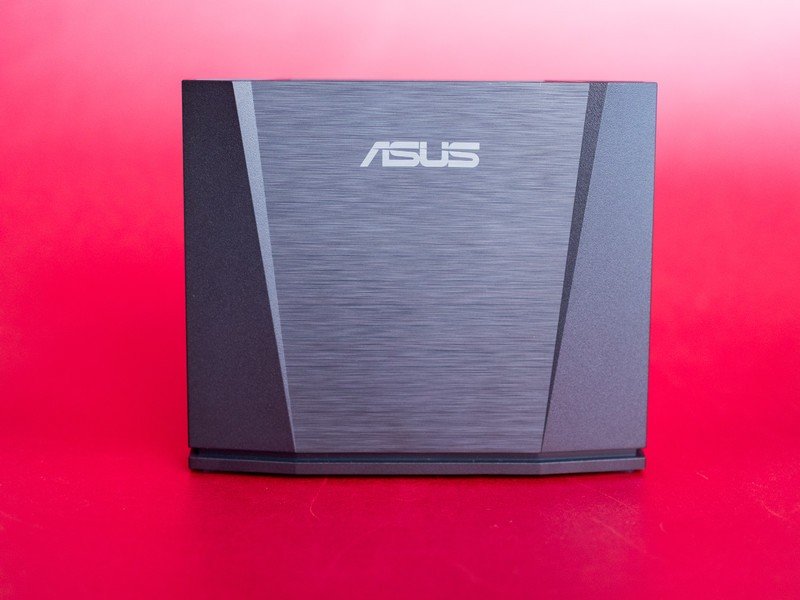
ASUS also has a WiGig dock that lets you play games wirelessly on your TV. The dock works over Wi-Fi 802.11ad (60GHz), and the latency is under 20ms, which is decent for most games.
Honestly, the sheer number of accessories on offer here is astounding, and there's no other manufacturer that has invested so much time and energy into building a lineup of accessories for a phone. This is clearly a long-term play by ASUS, and that's welcome news if you're looking to invest in the accessory ecosystem.
ASUS ROG Phone 2 Battery life

Far too few flagships these days have great battery life. Sure, you'll get a day's worth of use out of the Galaxy Note 10+ and Pixel 3, but if you want multi-day battery life, there really is only Huawei to consider, and that's not an option if you're in the U.S.
That's why it's great to see ASUS offer a massive 6000mAh battery here. The battery easily lasts two days on a full charge, and that's factoring in the 120Hz panel. Screens with high refresh rates tend to drain a battery, but it's great to see the phone deliver outstanding figures in this area.
You get two days of use out of the monstrous 6000mAh battery.
And when you do need to charge, there's a 30W Quick Charge 4.0 charger bundled in the box. The phone goes up to 25W by itself, but ASUS is offering a 30W charger. Like OnePlus's Warp Charge, the charging circuitry in ASUS' charger is included in the adapter, meaning the phone itself will not get hot while charging.
ASUS also explicitly mentions that there's no need to fully charge the battery to 100% during the daytime, and that's true. Even with around 50% or 60% charge, you'll easily get a day's worth of use from the battery. That's a big deal, particularly in the context of the Pixel 4 XL.
ASUS ROG Phone 2 Software

The ROG Phone 2 comes with Android 9.0 Pie out of the box, and the biggest change on the software front is that you can now switch to a "pure" Android skin. The gaming-focused theme is still available if you want, and you can choose between the two at initial configuration. That's a big deal, because that makes the phone a much more exciting option for everyday usage.
You can switch to a "pure" Android skin that looks identical to the software on the ZenFone 6.
The pure Android skin is identical to the software you'll find on a ZenFone 6. ASUS hasn't made any changes to the software here, and that's a good thing. You get a clean user interface that's free from any bloatware, and that should allow ASUS to deliver updates faster. My unit got one major software update, with the build going from 16.0622.1907.33 to 16.0631.1908.12. The update fixed a few lingering bugs, but in general, the software has been very reliable.
ASUS provides differentiation on the software side via two apps: Armory Crate and Game Genie. Armory Crate is a hub that shows all the games installed on your phone, and it is also where you monitor the phone's hardware stats — temps, core clocks, memory usage, and available storage. You can also set the actuation level for AirTriggers from here, adjust the system lighting effects, and set up game profiles.
You get a level of hardware customization that's unheard of on any other phone.
There's also an X Mode that turns everything up, and you can even set custom rules for individual games. There's even a Hardocre Tuning mode that lets you lock in max frequencies for each individual core for a game, and this is a level of customization that I haven't seen on any other phone. Heck, it isn't possible to do most of this stuff without root. Obviously, you don't need to fine-tune any of these settings — there's enough power out of the box that you can leave most of the settings as it is and still get stellar performance.
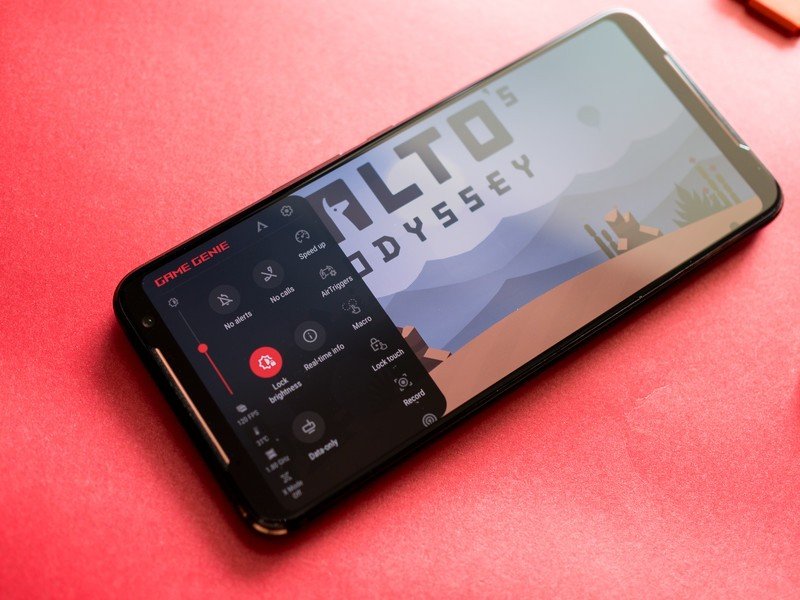
Game Genie is a popup that triggers every time you launch a game, giving you an easy way to see if X Mode is enabled for a particular title, and you get the ability to mute calls and notifications. As with everything else, ASUS added a robust set of features in Game Genie, and you can launch the service via a swipe left within a game. You get to lock brightness so the ambient sensor doesn't automatically lower brightness in the middle of a game, and there's also a screen recorder, ability to set macros, adjust AirTriggers, clear cached memory, and so much more.
Just as with the hardware, ASUS invested a lot of time figuring out the software features. Armory Crate and Game Genie are powerful additions that offer a ton of customizability, and that's what you're looking for in a gaming phone. Of course, if you don't care about any of that, you can just ignore the services and continue using the phone just like any other Android device.
The phone is running Pie, and there's no official timeline for when ASUS will deliver the Android 10 update. But it should be available before the end of the year.
ASUS ROG Phone 2 Camera
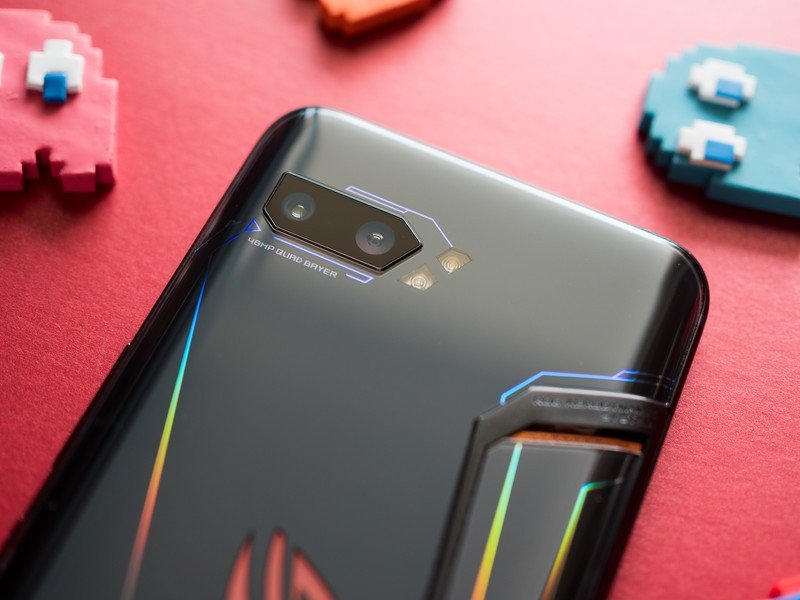
The ROG Phone 2 comes with the same optics as the ZenFone 6: you get a 48MP Sony IMX586 primary shooter, and there's a 13MP wide-angle lens with a 125-degree field-of-view. The camera UI is also unchanged from the ZenFone 6, with all the shooting modes and toggles clearly laid out.


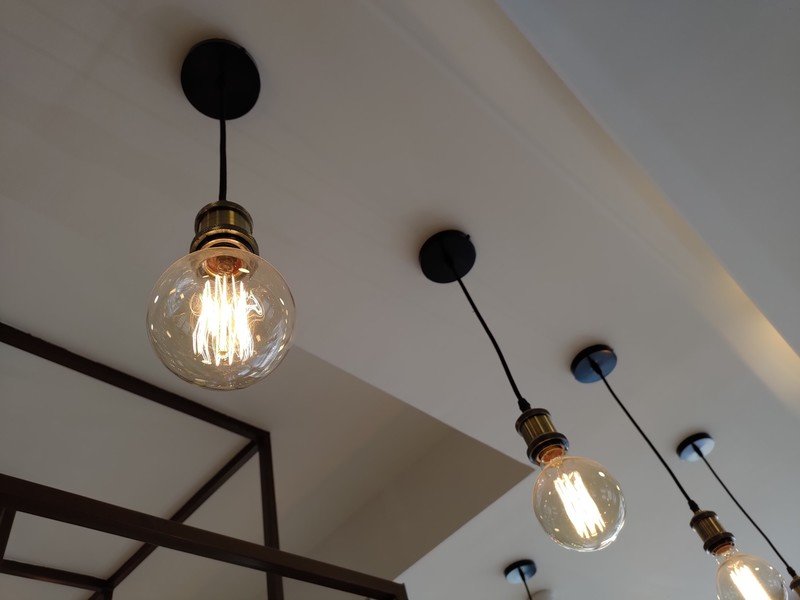

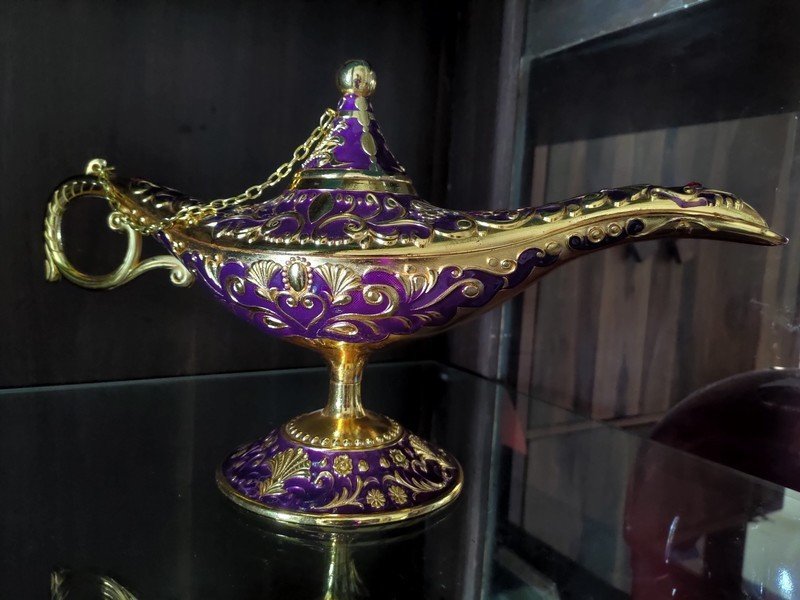

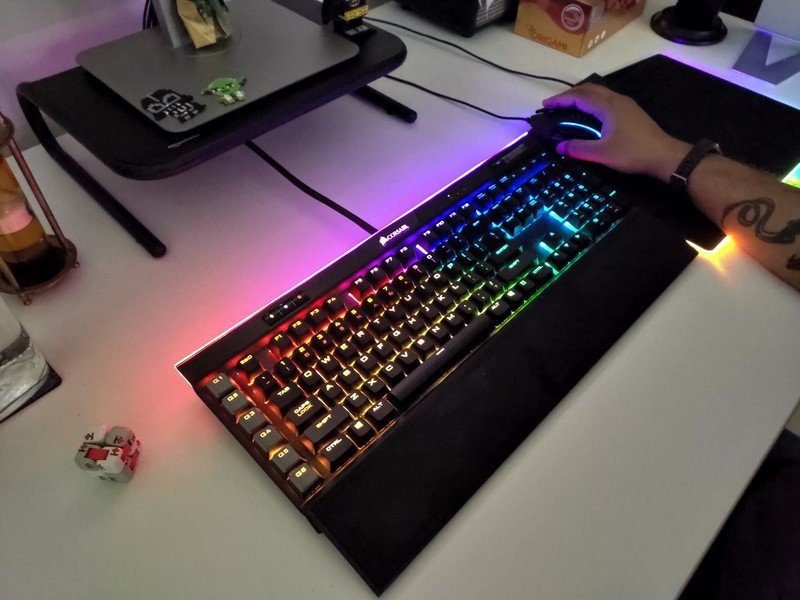
You get the same quality of shots, and while the camera doesn't do such a great job in low-light conditions, it delivers stunning shots in daylight scenarios. Like the ZenFone 6, colors are on the cooler side. Overall though, this is a decent camera for everyday use, but it's not on the same level as the Pixel 4 or even the Note 10+. There's also a 24MP front shooter that works particularly well if you're looking to stream live video.
ASUS ROG Phone 2 Should you buy it?

Few phones available today are as exciting as the ROG Phone 2. There's a lot going on here, and ASUS managed to do a fantastic job with the feature loadout. There really isn't anything missing here from a hardware or software standpoint, and when you factor in just how much stuff you get, it ends up being a fantastic deal.
The ROG Phone 2 is a fantastic option even if you don't play many games on your phone.
The 120Hz display is sublime, and the 49ms touch latency along with the excellent AMOLED panel make it an absolute delight to play games on the phone. The hardware is similarly incredible, and the Snapdragon 855+ chipset combined with 12GB of RAM and 512GB of storage makes the phone a gaming powerhouse. The thermal management definitely makes a difference here, allowing you to play games for longer without having to worry about the hardware throttling.
Then there's the 6000mAh battery, which delivers better battery life than any other flagship available in the U.S. today. The clean software is also a welcome change, and if you don't care for all the gaming-focused tweaks, you can just turn them off.
Sure, at $900 it is around the same cost as a Note 10+ or the Pixel 4, but the hardware is on par with the best that Android has to offer. The camera may not be the best in this category, but the screen is fantastic and you get the best possible hardware on a phone today.
4.5 out of 5
There are two parts to the ROG Phone 2 story. The phone is sold in China, India, and the U.S., and for this review, we're going to focus on the latter two markets. In the U.S., you can buy the 12GB/512GB variant of the ROG Phone 2 for $900, whereas in India, the 8GB/128GB model is available for ₹37,999 ($535), making it a standout deal in that particular market.
Obviously, it would have been great if ASUS rolled out the 8GB/128GB option of the ROG Phone 2 in the U.S., as it would've allowed the manufacturer to go up against the likes of the OnePlus 7T. But that isn't the case, and you'll have to shell out $900 to get your hands on the phone in the country.
The 12GB option in India costs ₹59,999 ($845), so it's not that different from the U.S. But the 8GB model is a stellar deal, and it's a shame that's not available in the U.S. Still, while $900 is a lot to pay for a phone, you are getting a whole lot of phone.

The best gaming phone available today.
The ROG Phone 2 has everything turned up to 11: there's RGB lighting at the back, the Snapdragon 855+ chipset runs through everyday tasks with ease, the 120Hz display fundamentally alters how you use the phone, and the 6000mAh battery lasts two days. Yes, it's a great gaming phone, but even if you're not into gaming, there's plenty to like here.

Harish Jonnalagadda is Android Central's Senior Editor overseeing mobile coverage. In his current role, he leads the site's coverage of Chinese phone brands, networking products, and AV gear. He has been testing phones for over a decade, and has extensive experience in mobile hardware and the global semiconductor industry. Contact him on Twitter at @chunkynerd.
